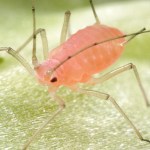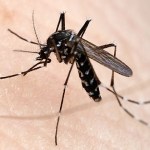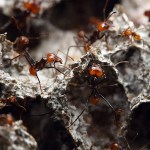Science
Image: wemidji (Jacques Marcoux).
Nam et ipsa scientia potestas est (And thus knowledge itself is power)
-- Sir Francis Bacon.
The next edition of Scientia Pro Publica (Science for the People) will publish TOMORROW and as usual, it is seeking submissions and hosts! Can you help by sending URLs for your own or others' well-written science, medicine, and nature blog essays to me or by volunteering to host this carnival on your blog?
Scientia Pro Publica is a traveling blog carnival that celebrates the best science, environment, nature and medical writing that has been published in the…
tags: Birdbooker Report, bird books, animal books, natural history books, ecology books
Books to the ceiling,
Books to the sky,
My pile of books is a mile high.
How I love them! How I need them!
I'll have a long beard by the time I read them.
~ Arnold Lobel [1933-1987] author of many popular children's books.
The Birdbooker Report is a special weekly report of a wide variety of science, nature and behavior books that currently are, or soon will be available for purchase. This report is written by one of my Seattle birding pals and book collector, Ian "Birdbooker" Paulsen, and is edited…
The APS now gives out an Abraham Pais Prize for History of Physics, which gives you some idea of how influential his work was, in particular "Subtle Is the Lord..." The Science and Life of Albert Einstein, which won prizes and sits in a prominent position on the bookshelves of many physicists. Like a lot of influential works, though, it's kind of odd to read it much later than some of the works it has influenced.
The ordering of the subtitle is very deliberate, and accurate. This is first and foremost a book about Einstein's science, with a biographical structure and occasional biographical…
A college classmate sent me this picture of a library display in the Boston area:
That's How to Teach Physics to Your Dog prominently displayed on the top shelf. Just below it, you can see Physics for Future Presidents, and to the right, you can just make out Richard Dawkins's book on evolution. Pretty good company to be in, and even better to be on top of...
(Yes, I know, relative position in a library book display doesn't have anything to do with anything. It's fun to pretend, though...)
(Thanks for the picture, Andrew.)
Image: wemidji (Jacques Marcoux).
Nam et ipsa scientia potestas est (And thus knowledge itself is power)
-- Sir Francis Bacon.
The next edition of Scientia Pro Publica (Science for the People) will publish this Monday and as usual, it is seeking submissions and hosts! Can you help by sending URLs for your own or others' well-written science, medicine, and nature blog essays to me or by volunteering to host this carnival on your blog?
Scientia Pro Publica is a traveling blog carnival that celebrates the best science, environment, nature and medical writing that has been published in the…
[U]nlike artists or musicians, we do have competitors. Only van Gogh can paint like van Gogh and the uniqueness of Beethoven's music is immediately recognizable. Their contributions are irreplaceable. But individual scientists are not irreplaceable. There are many, many examples of important discoveries being made simultaneously by several individuals or groups working independently. The social scientists have all manner of explanations for this "phenomenon" but the bottom line is this: If I am not the first to discover, almost certainly someone else will be. No wonder we are so desperate to…
This is the first I've heard of this, but there is a devastating disease called Plum Pox Virus that kills trees bearing stone fruits, like plums and peaches, and the only way to deal with infected plants is to rip them out of the ground and destroy them. There has been a recent outbreak in Pennsylvania; don't rush out to buy the last of the fruits in an apocalyptic terror, it's just a hint of a potential problem for the future, but you can worry a little bit. And maybe you can promote some science that will help.
A new variety of plum called the Honey Sweet has been genetically engineered…
A pleasingly pink pea aphid (Acrythosiphon pisum)
A long time ago, on a host plant far, far away, an aphid became infected with a fungus. And then it did something unusual: it incorporated some fungal genes into its own genome.
New research by Nancy Moran and Tyler Jarvik, published yesterday in the journal Science, used the newly-published pea aphid genome to demonstrate that the genes the aphids use to make pink carotenoid pigments are derived not from insects but from a gene lineage nested well within the fungi.
This observation is interesting for two points. First, most animals with…
I'm off to Williamstown this afternoon, to talk about research and alsoHow to Teach Physics to Your Dog. If you need blog-based entertainment, though, here are some shiny new radio buttons for you to click:
You're a beam of light: quick, what's your polarization?online survey
I won't offer a personality analysis based on these results, but after enough people vote, we will be able to determine the angle between this blog's readers and the horizontal. So that's something. Of course, it would require several more polls for full quantum state tomography...
(If you're new here, or ok with old…
We're just over 600 votes in the Laser Smackdown poll in honor of the 50th anniversary of the laser, as of early Friday morning. I notice that it has moved off the front page of the blog, though, so here's another signal-boosting repost, just so we have as many votes as possible, to establish maximum scientific validity when we declare the winner the Most Amazing Laser Application of All Time
Which of the following is the most amazing application of a laser?Market Research
Voting will remain open until next Sunday, May 2, just two days from now, with the ultimate winner announced on Monday…
Image: wemidji (Jacques Marcoux).
Nam et ipsa scientia potestas est (And thus knowledge itself is power)
-- Sir Francis Bacon.
The next edition of Scientia Pro Publica (Science for the People) will publish this Monday and as usual, it is seeking submissions and hosts! Can you help by sending URLs for your own or others' well-written science, medicine, and nature blog essays to me or by volunteering to host this carnival on your blog?
Scientia Pro Publica is a traveling blog carnival that celebrates the best science, environment, nature and medical writing that has been published in the…
Over at scientificblogging.com, Mark Changizi has a post about "unconstrained scientific craziness":
I criticized avant-garde artists for their craziness, all the while explicitly aiming for craziness as a scientist! In effect, I was teaching my students to be avant-garde scientists, and trying myself to be an avant-garde scientist, yet somehow failing to notice that this outlook had transformative implications for my view of avant-garde art.Just like me, avant-garde artists are trying to be "crazy", hoping to make that next non-incremental advance. There's a method to the madness: the…
NASA loses a balloon in the outback
The Nuclear Compton Telescope (PI Boggs at UCB's SSL), a soft γ-ray telescope designed for balloon launch, observations in the stratosphere, and recovery, crashed because of a wind gust during an attempted launch in Australia earlier today.
ABC News (Oz) on youtube
NCT is an wide field imaging telescope with polarization capability.
Science goals were galactic nuclear emission lines for studies of nuclear synthesis in supernovae, and γ-ray polarization studies.
It flew last year out of the SFBF in New Mexico - guess they were going after southern…
Over in Twitter-land, S. C. Kavassalis notes a Googler who's not afraid to ask the big questions:
Weird Google search of the week: 'the "one" scientific idea that we need to believe'. Uh um, I'm sure my blog couldn't possibly answer that.
It's a good question, though, ad there are a couple of different ways to take it. You could read it as "What one scientific idea is supported by the most experimental proof?" or you could read it as "What one idea is most central to science generally?"
"The Standard Model" was quickly suggested on Twitter, which could fit either. I think it might be…
A sad and sordid story from the Times Higher Education following the rescinding of invitations to a conference on quantum foundations:
Details of the conference in August for experts in quantum mechanics sounded idyllic. Participants were due to discuss "de Broglie-Bohm theory and beyond" in the Towler Institute, which is housed in a 16th-century monastery in the Tuscan Alps owned by Mike Towler, Royal Society research fellow at Cambridge University's Cavendish Laboratory.
Last week, any veneer of serenity was shattered. Conference organiser Antony Valentini, research associate in the…
I'm a little surprised at the vehemence of some of the negative reactions to Stephen Hawking's comments about aliens. Not so much in blogdom-- Ethan's response is pretty reasonable, for example-- but there was a flurry of Twitter traffic yesterday of the form "Where does Stephen Hawking get off pontificating about aliens?" which strikes me as kind of silly.
As all the news stories point out, Hawking's comments were made in the context of a Discovery channel series based on filming Stephen Hawking pontificating about stuff. And, really, if the Discovery Channel called me up and offered to film…
Yesterday, Antweb posted its first images of Anomalomyrma workers, and I've been staring at them ever since.
This is a strange ant indeed, a member of the ancient subfamily Leptanillinae that is potentially a sister lineage to the remaining extant ants. It's ostensibly a subterranean predator in the forests of tropical Asia, but beyond that little is known. The number of times Anomalomyrma has been collected can probably be counted on my fingers.
Here's a pic:
Call me crazy, but the shape of this thing puts me in mind of another ant oddity: Martialis heureka:
Martialis was discovered in…
I'm teaching Physics 350: Quantum Mechanics this term, which is a junior/senior level elective course using Townsend's book which deals with quantum mechanics in the state vector formalism. The room in which the class meets is the only one in the department that contains a whiteboard (using dry-erase markers) rather than a blackboard (using chalk).
In the first several weeks of the course, I have mostly been using blue markers, because that's what's been in the room. These fade into illegibility very quickly, so today I went into the stockroom to get more, and discovered a box of black…
What was that dazzling sequence of nucleotide bases? Here's a more holistic view:
Aedes albopictus, the Asian Tiger Mosquito
The gene was ribonucleotide reductase, which is essential for DNA synthesis. If you followed the BLAST results back through to the paper where this sequence was published, you'll see that the researchers were interested in this gene because some of their mosquito cell lines were showing resistance to a chemical, hydroxyurea, that is used to synchronize cell cultures. This gene was linked to the resistance, and sequencing it allowed them to see that copy number, rather…
I apologize for the slow blogging this weekend. We took a little road trip up to beautiful Madison, Wisconsin and were too busy with bratwurst, cheese, beer, and roller derby to bother with the internet.
Atta cephalotes in the fungus garden
The University of Wisconsin is home to Cameron Currie, whose lab is at the cutting edge of insect-fungus-microbe evolutionary biology. Cameron is one of the people who first realized that the classic ant/fungus mutualism was more complex than just the insect and the fungus, involving all sorts of microbes, including some that live on the ants' exoskeleton…



